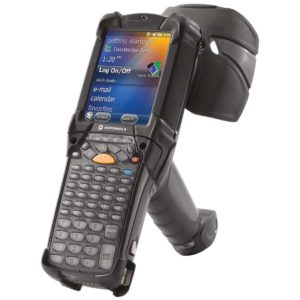Key Takeaways
- The more equipment you rent out, the more challenges you face
- Technology mitigates all of these challenges
- Value-added services help you stand out from the crowd
Today, construction companies are increasingly turning towards renting equipment instead of buying it.
This shift allows contractors to save on costs, access a wide variety of construction equipment, and avoid the hassles of maintenance and storage.
However, for rental companies, this uptick in demand exacerbates the complexities they have to navigate to meet the diverse needs of their clients and stay competitive.
In this article, we’ll discuss six challenges that equipment rental companies face and suggest ways how you can successfully overcome them.
In this article...
Managing the Rental Process Across Multiple Projects
While renting construction equipment may seem like a fairly simple job to an outsider, professionals in the rental industry know otherwise.
More precisely, they know that smooth day-to-day operations depend on a number of critical rental processes, particularly when dealing with numerous clients across multiple projects.
In this context, rental companies need to:
- coordinate rental timelines to ensure equipment availability for all clients/projects,
- handle rental agreements and their client/project-specific terms and conditions,
- ensure clear communication between all involved parties,
- manage the financial side, i.e., billing, invoicing, and processing payments.
The challenges arising from managing these processes in real time are multifold.
The illustration below shows just some of the things that can go wrong:

When dealing with many clients, it’s easy for the described mix-ups and errors to occur.
So, how can these issues be prevented or at least minimized?
A short answer would be technology.
These and other challenges outlined in this article can be most effectively addressed by leveraging a combination of the right software tools that support equipment tracking and management.
For instance, solutions that enable clients to rent equipment through your website can alleviate many problems that become more complex as the number of clients and their projects grows.
Here’s an example:

As illustrated, this software enables potential clients to view available equipment and pricing on your website, reserve it, and pay for it.
This streamlines a good part of the rental process, allowing you to avoid many issues we mentioned, such as overbooking, inaccurate communication of client requirements, and delayed payments.
When such systems also provide contract management, then problems with contract disputes and non-compliant equipment use are also minimized.
Finally, another crucial component of efficiently managing rentals across multiple projects concerns your internal equipment management processes, which we’ll discuss next.
Keeping Track of Equipment Availability
One of the most critical tasks for equipment rental companies is keeping track of when their equipment is available for rent, and when it’s not.
Sure, an online reservation system integrated into your website will give you an overview of all equipment that is currently rented out or booked to be rented.
However, if this equipment availability data is based on your employees manually entering info when a machine is released to a client and when it’s returned, it’s prone to mistakes.
Data entry mishaps or delayed availability updates can still lead to:
| equipment overbooking | resulting in client dissatisfaction and reputation loss |
| equipment underutilization | causing financial loss and missed rental opportunities |
On that note, we should highlight that the recommended utilization rate in the equipment rental industry is 72%.
Let’s look at what else this industry recommendation contains.

These percentages are best explained on a hypothetical rental fleet of 100 bulldozers.
In such a case, 72 bulldozers should be rented out, 20 should be available for rent, and 8 of them could be unavailable due to regular maintenance.
Of course, achieving this utilization rate across your rental fleet only highlights the need to:
- accurately track equipment availability,
- automate real-time availability updates,
- quickly react to last-minute cancellations or schedule changes.
These availability-tracking enhancements can be achieved by using software to track your equipment rentals.
For instance, our equipment tracking solution, GoCodes Asset Tracking, provides you with smartphone-scannable QR code labels, an in-app scanner, and cloud software.
Together, these elements allow you to establish a centralized, easily accessible, and updatable database of all your equipment.
When your equipment is tagged with our QR code tags, employees can simply scan the code to check out equipment to clients and scan it again when the equipment is returned.
Here’s how this simple process works.

That way, the system will instantly make the availability changes visible to other employees who have access to the GoCodes Asset Tracking app.
As we’ll see in the next sections, GoCodes Asset Tracking also provides other valuable features for equipment rental companies that help them prevent theft and ensure proper equipment maintenance.
For now, remember that leveraging technology to track equipment availability allows you to optimize rental operations, reduce manual errors and time lags, and improve client satisfaction.
Preventing Equipment Theft
Although rental companies are typically not liable when equipment rented out to clients is stolen, there are still many theft risks they need to consider.
For example, your rental equipment can be stolen:
- from your rental yards and storage facilities,
- while in transit between your company and the client’s job site.
Moreover, regardless of how and when a piece of rental equipment is stolen, the consequences for your business include missed business opportunities and lost revenue.
If the equipment was stolen while in your company’s possession, you can also expect increased insurance costs and unsatisfied clients who were unable to rent the equipment they need.
On that note, consider the following findings about equipment theft in the period of only 6 days around the 2024 Memorial Day:

As illustrated above, worksites are favorite targets for thieves but dealerships and storage facilities do not lag far behind.
Moreover, keep in mind that only about 20% of stolen equipment is ever recovered.
So, what can you do to prevent theft of your rental equipment?
In addition to improving security with traditional measures like installing fences, surveillance, and alarm systems, consider adding GPS trackers to your equipment.
For instance, our GPS trackers allow you to track your equipment anywhere in the world in real time.

Additionally, you can set up a geofence, i.e., a virtual security perimeter that will alert you if one of your vehicles leaves the designated area.

In cases of theft, such alerts can help you react quickly and report theft to authorities along with the stolen equipment’s real-time location, aiding in its recovery.
GPS trackers also enable you to assist clients in theft recovery and monitor whether they’re using the rented equipment as agreed.
Overall, equipping your rental equipment with real-time GPS trackers is a great way to prevent equipment theft.
Assuring Timely Maintenance
Considering the recommended utilization rate for rental equipment we mentioned, it’s clear that ensuring timely equipment maintenance is vital for your business’s smooth operations.
A well-planned and executed preventive maintenance program can increase your equipment’s reliability, maximizing its availability and utilization. That, in turn, leads to higher profits for your renting business.
Conversely, poor servicing of your rental equipment can lead to unexpected breakdowns or maintenance issues that prevent your client from performing scheduled construction tasks.
This can result in costly project delays if you can’t replace the failed equipment quickly, which will certainly cause client dissatisfaction and reputation damage.
So, how can these maintenance-related challenges be best addressed?
By using software that can help you track equipment maintenance tasks, preferably provided as a part of the equipment tracking solution.
With such solutions, you typically get a centralized database of all your equipment.

And since each piece of equipment gets its dedicated info page, you can easily:
- inspect its maintenance and repair history,
- review other maintenance-relevant data (warranty, depreciation),
- schedule preventive maintenance (and unexpected repairs when they occur),
- assign maintenance tasks to specific service technicians,
- ensure that technicians are alerted to upcoming tasks in a timely manner.
Long story short, maintenance tracking solutions enable you to effectively plan and operationalize your preventive maintenance program.

Additionally, when GPS trackers are integrated with onboard telematics sensors, you get to gather real-time data on the condition of your equipment and its utilization.
More precisely, you can engage in predictive maintenance, i.e., use the sensor-collected equipment data to detect and address minor equipment issues before they escalate.

Therefore, a combination of software and tracking technologies allows you to seamlessly implement preventive maintenance planning and fault monitoring, thus maximizing your rental equipment’s reliability and utilization.
Coordinating Equipment Transportation
When the client wants your rental equipment to be delivered or picked up, coordinating transportation can be a logistical nightmare.
This especially applies to large or specialized equipment that requires special handling.
The primary challenge arises from the complexity of transport scheduling and routing.
Let’s say you need to deliver a large piece of equipment to a job site in a densely populated urban area.
In this case, when organizing transport, consider factors like equipment size versus street width and height, load restrictions, traffic conditions, and local regulations.
Otherwise, you’re risking accidents like this.

Of course, traffic jams, weather conditions, a client’s last-minute changes, and other unforeseen issues can further complicate your transport coordination efforts.
Given these complexities, let’s suggest a solution.
It involves using real-time GPS trackers, route planning and navigation systems, and communication tools to optimally plan and then coordinate equipment deliveries and returns as they occur.

Such a robust logistics management system can also include options for clients to monitor expected deliveries in real time or receive precise information about when equipment will arrive.
Additionally, you can consider partnering with reliable transportation companies that specialize in heavy equipment logistics.
Now, let’s discuss the challenges your business faces when trying to stand out among the competition.
Standing Out Among Competitors
Staying ahead of other equipment rental companies fighting for the same clients as you is a constant challenge.
As such, addressing other challenges we covered, from providing seamless rental service across multiple projects to ensuring equipment tracking and convenient transport options, can certainly give you a competitive edge.
Next, having a user-friendly website with clear information on available equipment, pricing, and booking options can set you apart from less tech-savvy competitors.

Other ways to stand out among your rental competitors include:
- providing exceptional service and flexible rental terms,
- offering value-added services like training and on-site support,
- building strong client relationships to foster repeat business and referrals,
- engaging in effective marketing,
- leveraging technology solutions we discussed.
Another tech-enabled strategy for staying competitive involves using pricing optimization software.
Such solutions use machine-learning algorithms to analyze internal and external pricing factors and then recommend optimal prices.
Here’s an example.

The above-shown software analyzes internal data like rental equipment costs and utilization, as well as external data like competitors’ prices, seasonality, and demand forecasts.
This enables you to gain insights into competitive dynamics in your market and find optimal pricing strategies for staying price-competitive or offering more affordable options.
Overall, standing out among your equipment rental competitors requires utilizing a range of software tools, tracking technologies, and management methods while prioritizing client satisfaction and strong relationships.
Conclusion
Since the construction industry is quickly evolving both in technology use and business models, it’s clear that equipment rental companies also need to adapt.
As we’ve seen, despite many organizational and market challenges, this can be accomplished by carefully combining client- and process-oriented solutions and methods that streamline your rental operations.
Coupled with old-fashioned honest business practices, personalized service, and close client relationships, your rental business can satisfy client expectations while maximizing equipment utilization and profitability.








